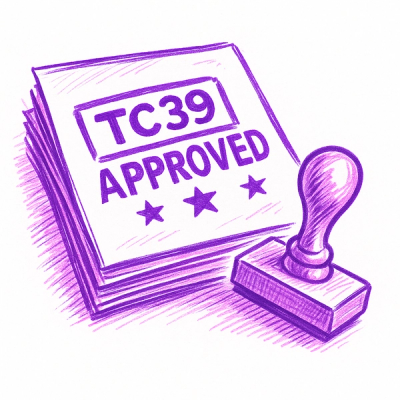
Security News
TC39 Advances 11 Proposals for Math Precision, Binary APIs, and More
TC39 advances 11 JavaScript proposals, with two moving to Stage 4, bringing better math, binary APIs, and more features one step closer to the ECMAScript spec.
node-red-nodes-cf-sqldb-dashdb
Advanced tools
Node-RED nodes to access SQLDB and dashDB services on Bluemix
Node-RED nodes to work with a database in a SQLDB or dashDB service that is integrated with IBM Bluemix.
Install from npm
npm install node-red-nodes-cf-sqldb-dashdb
This package contains 4 nodes -- two pairs of nodes for each of SQLDB and dashDB services. The node pairs work almost identically, so the documentation contained here applies to both. For each service, a query and an output node is provided. The query nodes let you issue a query against your SQLDB or dashDB service and pass along the result set in the msg object. The output nodes store elements from the msg object into your SQLDB or dashDB service database.
You will need to fill in the following fields:
-- Service should point to your SQLDB or dashDB service.
-- Query is the SQL select query you wish to execute on your dashDB service database.
These fields are optional:
-- Parameter Markers is a comma delimited set of json paths. These will replace any question marks that you place in your SQL query, in the order that they appear.
-- Name: Optionally give your node a name
The results of your query will be returned as a JSON array in msg.sqldb or msg.dashdb.
You will need to fill in the following fields:
-- Service should point to your SQLDB or dashDB service.
-- Table should point to the table you wish to insert the values into. This table needs to exist already in the database and needs to contain the same number of columns that you are inserting through this node. The data types and the order of the columns also have to match. The data needs to be in the format accepted by DB2 and within the appropriate ranges/parameters for that datatype.
-- Values takes a comma delimited set of JSON paths from the msg object. These are the values that will be inserted into your table, in the order that they appear.Note that the data needs to be in the format accepted by DB2 and within the appropriate ranges/parameters for that datatype. By default, it writes the msg.payload, which would require your table to have a varchar column big enough to store it. Example values field - inserts values from twitter and sentiment nodes:
The following fields are optional:
-- Checkbox for timestamp: If you wish, select the checkbox, and the node will automatically insert a timestamp as the first argument inserted into your table.You do not need to specify this again in the Values field. If you choose this option, your table will need to have a timestamp created as the first column.
-- Name: Optionally give your node a name, otherwise the default will be the table name.
FAQs
Node-RED nodes to access SQLDB and dashDB services on Bluemix
The npm package node-red-nodes-cf-sqldb-dashdb receives a total of 2 weekly downloads. As such, node-red-nodes-cf-sqldb-dashdb popularity was classified as not popular.
We found that node-red-nodes-cf-sqldb-dashdb demonstrated a not healthy version release cadence and project activity because the last version was released a year ago. It has 1 open source maintainer collaborating on the project.
Did you know?

Socket for GitHub automatically highlights issues in each pull request and monitors the health of all your open source dependencies. Discover the contents of your packages and block harmful activity before you install or update your dependencies.

Security News
TC39 advances 11 JavaScript proposals, with two moving to Stage 4, bringing better math, binary APIs, and more features one step closer to the ECMAScript spec.

Research
/Security News
A flawed sandbox in @nestjs/devtools-integration lets attackers run code on your machine via CSRF, leading to full Remote Code Execution (RCE).

Product
Customize license detection with Socket’s new license overlays: gain control, reduce noise, and handle edge cases with precision.